HAPPY BIRTHDAY TEDDY: THEODORE ROOSEVELT’S PERSONAL M1903 RIFLE
25th Oct 2019
Source Credit to guns.com | by Chris Eger
Click here to view the original article.
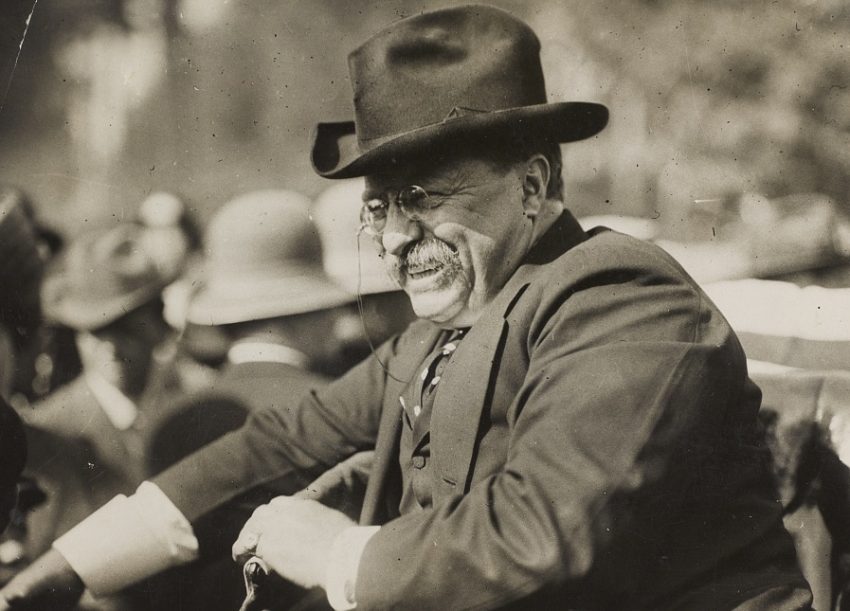
President Theodore Roosevelt was a statesman and soldier, but also a conservationist and noted sportsman with an interest in fine firearms. (Photo: Library of Congress)
As President and popular war hero, Theodore Roosevelt was one of the first in line to get one of the Army’s new M1903 rifles– but wanted it his way. With that, in honor of the 26th President’s 161st birthday this weekend, we take a look at one of his most interesting firearms.
Roosevelt, who earned perhaps a greater legend as a hunter and conservationist than any other American, had by 1903 led the New York City Police Department, been governor of the Empire State, was Assistant Secretary of the Navy, and had famously helped recruit and lead a regiment of volunteers up San Juan (Kettle) Hill in the Spanish-American War. At age 42, he became the youngest president in history– a record that remains today, after already filling the position of vice-president.
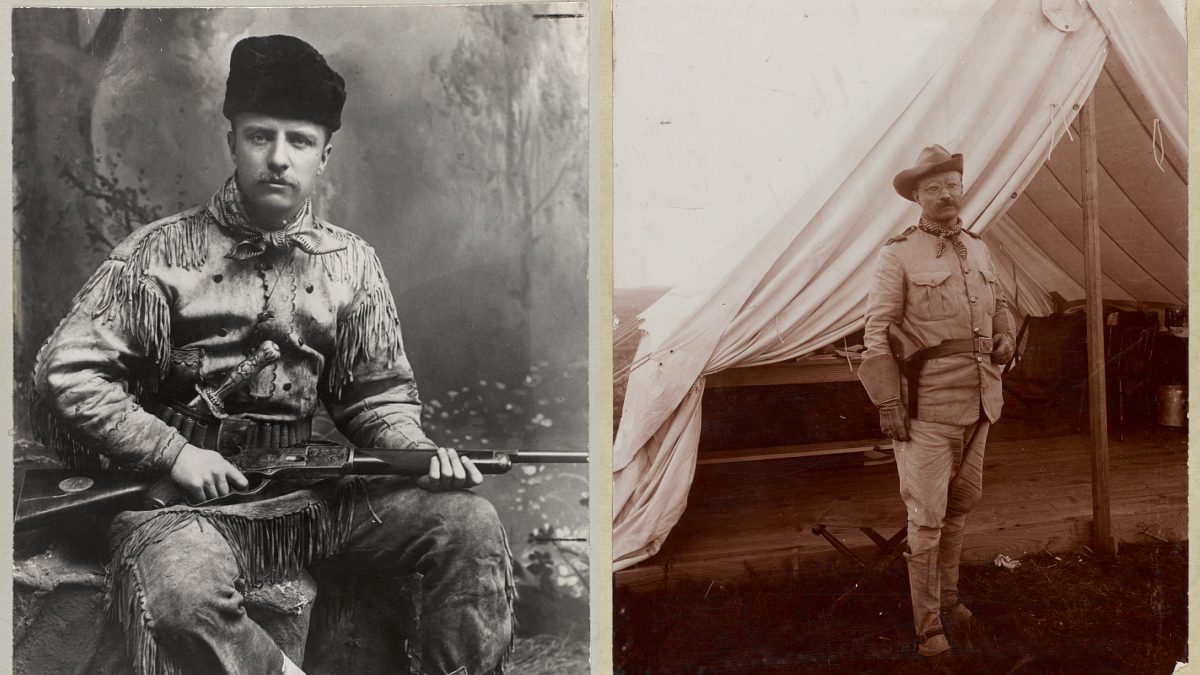
Roosevelt had a life-long love of hunting– shown above with a Winchester lever gun– and had resigned his post as assistant secretary of the Navy in 1898 to serve as a colonel in the Army during the Spanish American War, leading a volunteer cavalry regiment of cowboys and adventurers dubbed “The Rough Riders” into combat in Cuba. (Photos: Library of Congress)
As he had first-hand experience with the Army’s Krag .30-40 rifles in combat, and later became involved directly in the development of the new M1903 then being produced at Springfield Armory, it was natural that he moved to acquire one of these fine new bolt-action rifles for his own use in the field.
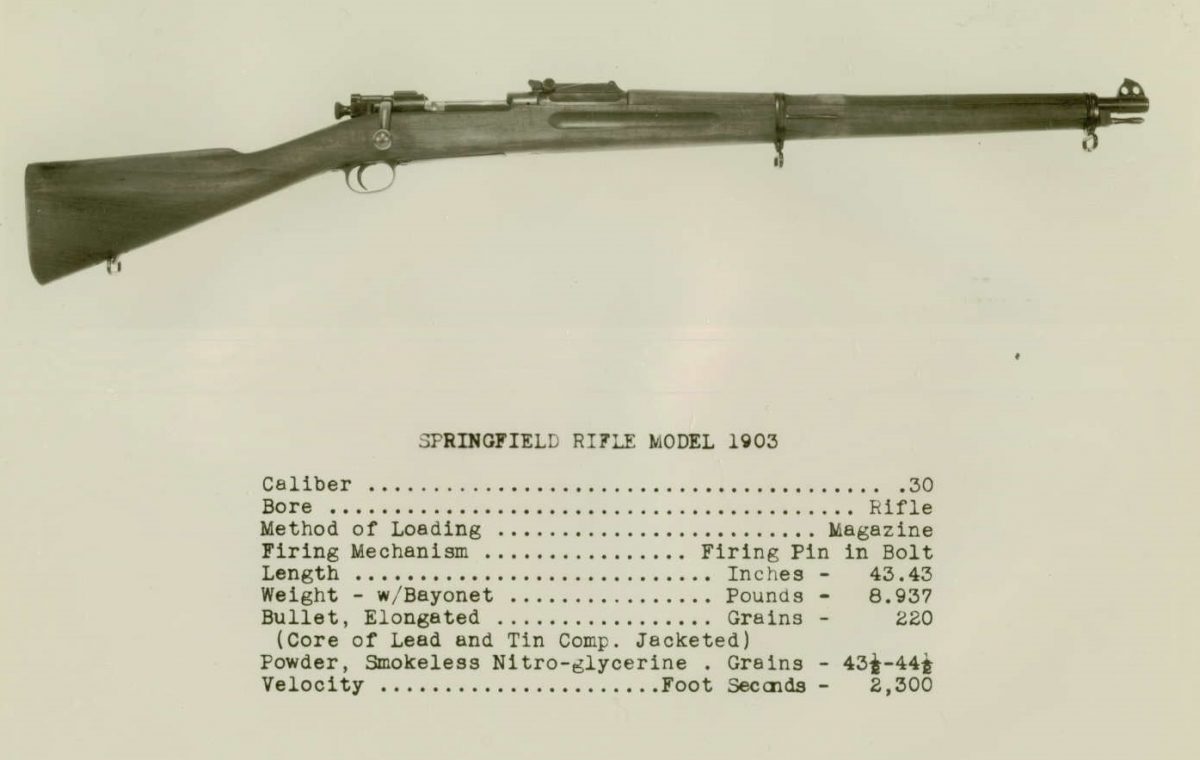
The M1903 Springfield in what eventually became .30-06 replaced a series of earlier Krag rifles made in the last days of the 19th Century which had proven unpopular in the Spanish-American War. The M1903 went on to serve in both World Wars with U.S. and allied forces. In the above photo, of the first issue version with the original bayonet, note the straight stock with no pistol grip. TR was no fan of the rod bayonet, writing the Secretary of War in 1905 to have it replaced, calling it “about as poor an invention as I ever saw.” (Photo: Springfield Armory)
In November 1903, TR reached out to Brig. Gen. William Crozier, then the Army’s Chief of Ordnance, including his personal rifle, for reference. The subject: getting a sporterized M1903 produced to spec.
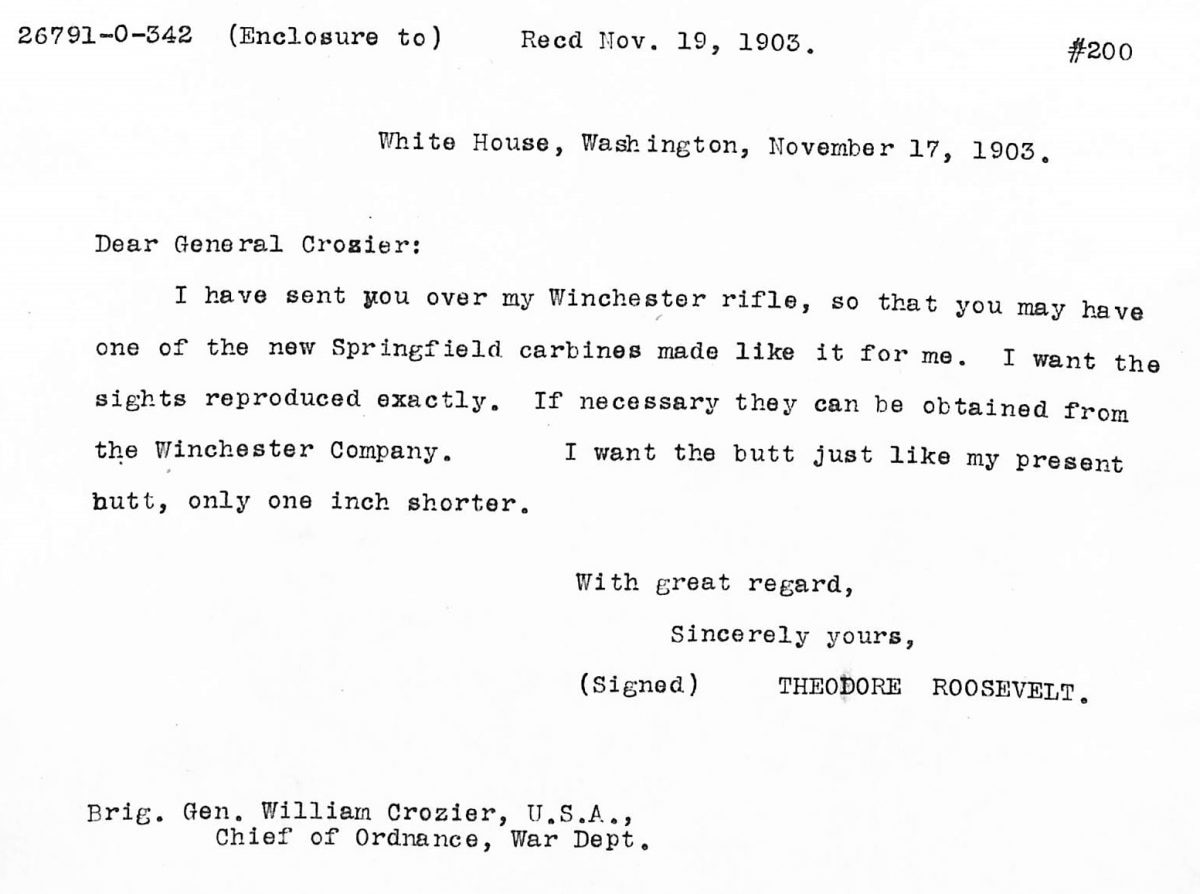
“I have sent you over my Winchester rifle, so that you may have one of the new Springfield carbines made like it for me. I want the sights reproduced exactly. If necessary they can be obtained from the Winchester Company. I want the butt just like my present butt, only one inch shorter.” (Photo: National Archives)
The request and sample Winchester soon found their way to Springfield Armory where Col. Frank Phipps, then head of the historic facility, which dated to 1791, ran point on the project.
The trigger pull was set at 4.5-pounds. The top surface of the M1903 for the President was roughed to prevent glare in the field. A Lyman adjustable sight was fitted with a series of three different wedges sent back to the White House for review.
The stock was crafted from the Winchester design “of a very peculiar shape” to what would be described today as a Monte Carlo-style sporter, complete with checkering on the forearm and pistol grip and a cheek rest on the left side of the buttstock. Phipps wrote that “it required a great deal of care to manufacture.” A special commercial buttplate, with a cost of 40-cents, was attached.
Lacking a bayonet lug or attachment point, the rifle had a short blade front sight rather than the M1903’s taller one, and, as the forearm was cut down to expose the barrel, only a single band. The rifle was tested by one Mr. RT Hare, an expert marksman at the Armory with years of experience, and found to be accurate.
The custom M1903, with the bill, was sent back to the White House on February 1, 1904, with Phipps commenting to Crozier that, “I hope he will like the gun, and that it will prove satisfactory.”
Apparently, the rifle was a hit as it was promptly paid for by Roosevelt out of his pocket with check No. 1282, dated February 5, 1904, for $42.13. This amount, adjusted for inflation, is about $1,200 in today’s dollars. Of note, the standard Springfield M1903 of the day cost the government $11 apiece, which today is about $300– a bargain!
Crozier explained to the President, in a letter currently in the Dickinson State University’s Theodore Roosevelt Center, that Phipps, “took great interest in the gun and insured by his care and watchfulness that the material and workmanship should be the best.”
He was spotted with the rifle on at least two big game hunts, in 1905 in Colorado for bear, and a 1910 African safari.
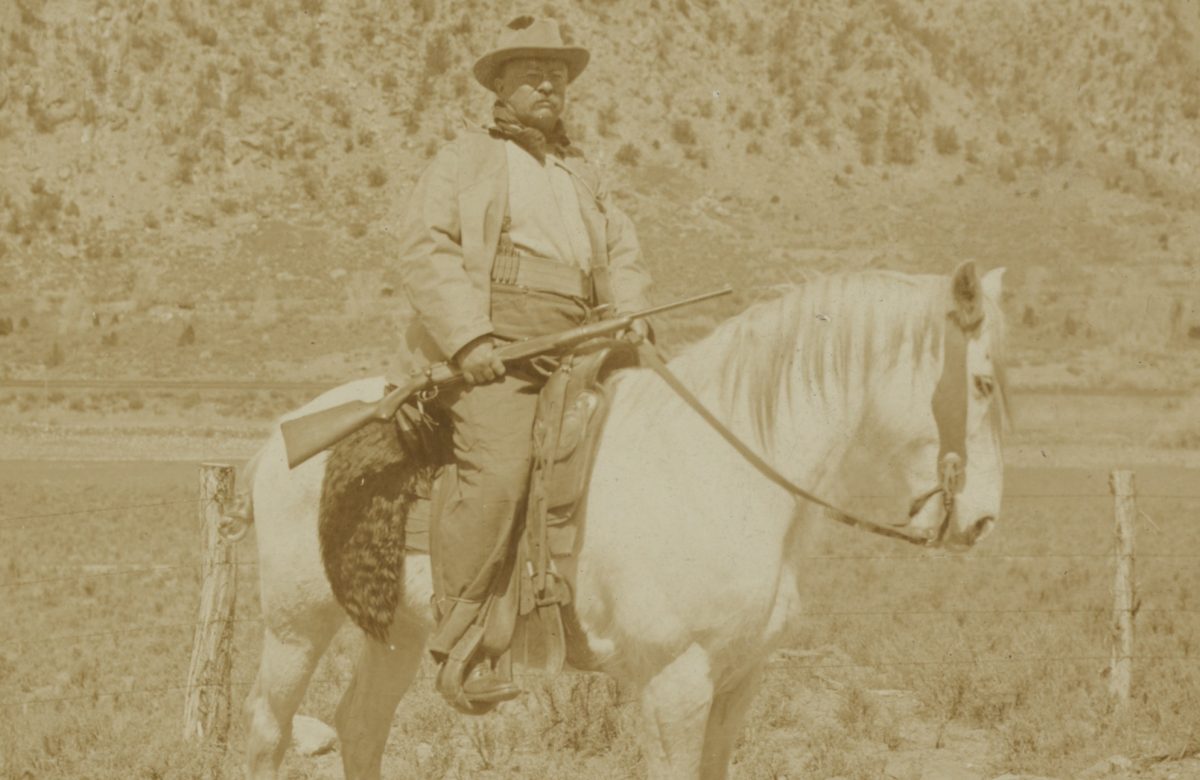
“On the great bear hunt President Roosevelt after leaving Newcastle for the mountains, 1905 Colorado.” Note the Colonel, who was president at the time, is carrying the modified M1903 and is using a Spanish-American War-era military-issue Mills Cartridge belt to hold reloads. If a current U.S. president went on a bear hunt with a “military rifle” today’s press would go nuts! (Photo: Library of Congress)
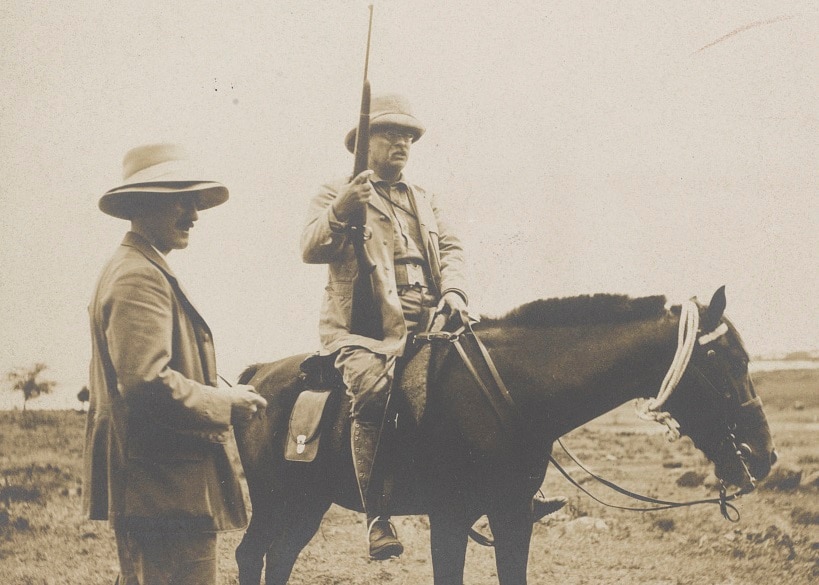
Roosevelt on horseback, holding what looks to be the modified M1903 rifle. The man standing next to him is possibly his son, Kermit Roosevelt. The image was from a 1910 African safari. (Photo: Library of Congress)
The rifle today is preserved in the collection of the Sagamore Hill National Historic Site, who graciously supplied Guns.com with images of it in its current state.
Note that the rifle, SN 0009, and has a rear adjustable sight rather than the military ladder sight that was standard GI-issue. (Photo: Sagamore Hill National Historic Site)
Also, note the extensive oil-finished walnut and hand checkering. (Photo: Sagamore Hill National Historic Site)
As for the more standard GI-issue Springfield M1903, it remained in regular U.S. military service through World War II and still endures in small numbers as a line thrower as well as in ceremonial and drill use. After all, it was good enough for the Bull Moose.



